Abstract
Breath holding was used as the basis of a simple test of respiratory chemosensitivity. Breath holding was begun at selected degrees of hypercapnia produced by CO2 rebreathing. In 16 healthy control subjects there was a linear regression of the log of breath-holding time on the PCO2 at the start of breath holding. Breath-holding time (BHT) and the slope of a log BHT/Pco2 plot were closely correlated with the ventilatory response to CO2. In five cases of the idiopathic hypoventilation syndrome, CO2 retention and reduced ventilatory response to CO2 were accompanied by prolonged breath-holding time and the regression of log BHT on Pco2 was abnormally flat. However, in 17 patients with chronic airways obstruction, breath-holding time was never prolonged and the log BHT/Pco2 relationship was normal, even though 13 had a diminished ventilatory response to CO2 and four had chronic CO2 retention. It is concluded that the BHT/Pco2 relationship provides a useful index of respiratory chemosensitivity which is not influenced by airways obstruction. This may be helpful in the detection of impaired chemosensitivity as a cause of CO2 retention even when the ventilation CO2 response is reduced non-specifically by coexisting airways obstruction.
Full text
PDF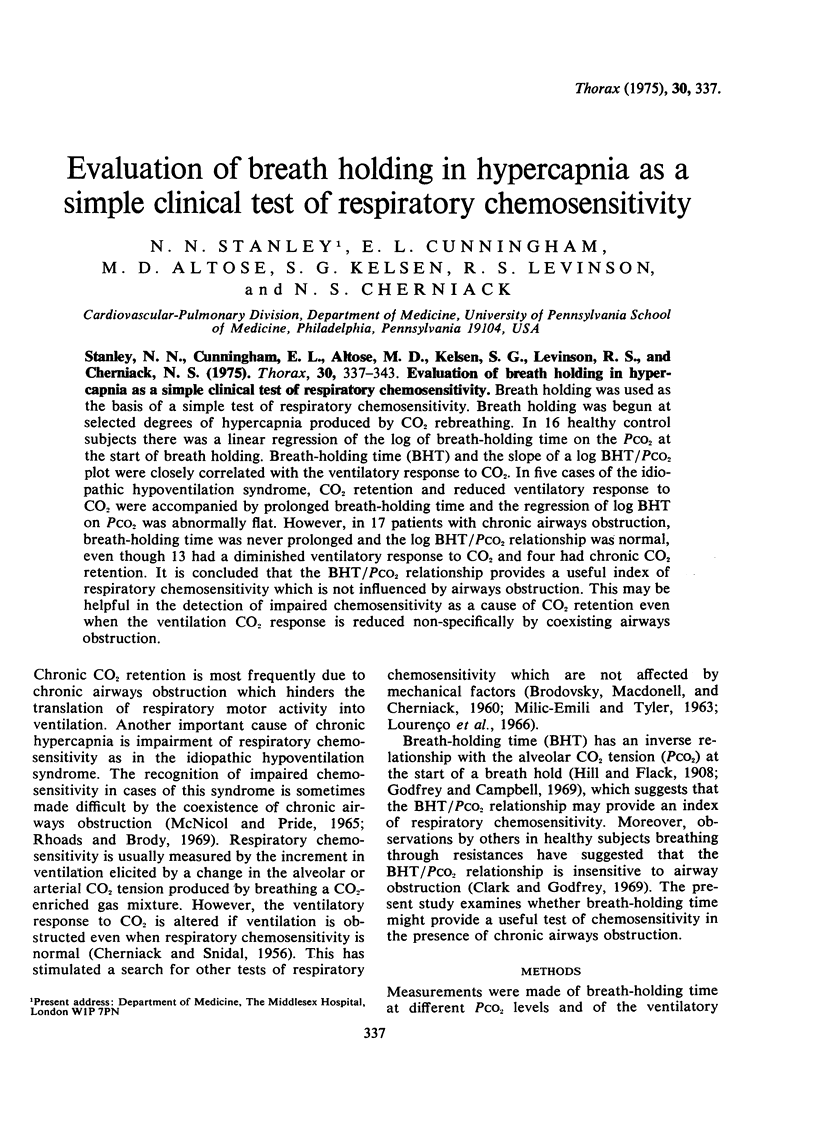
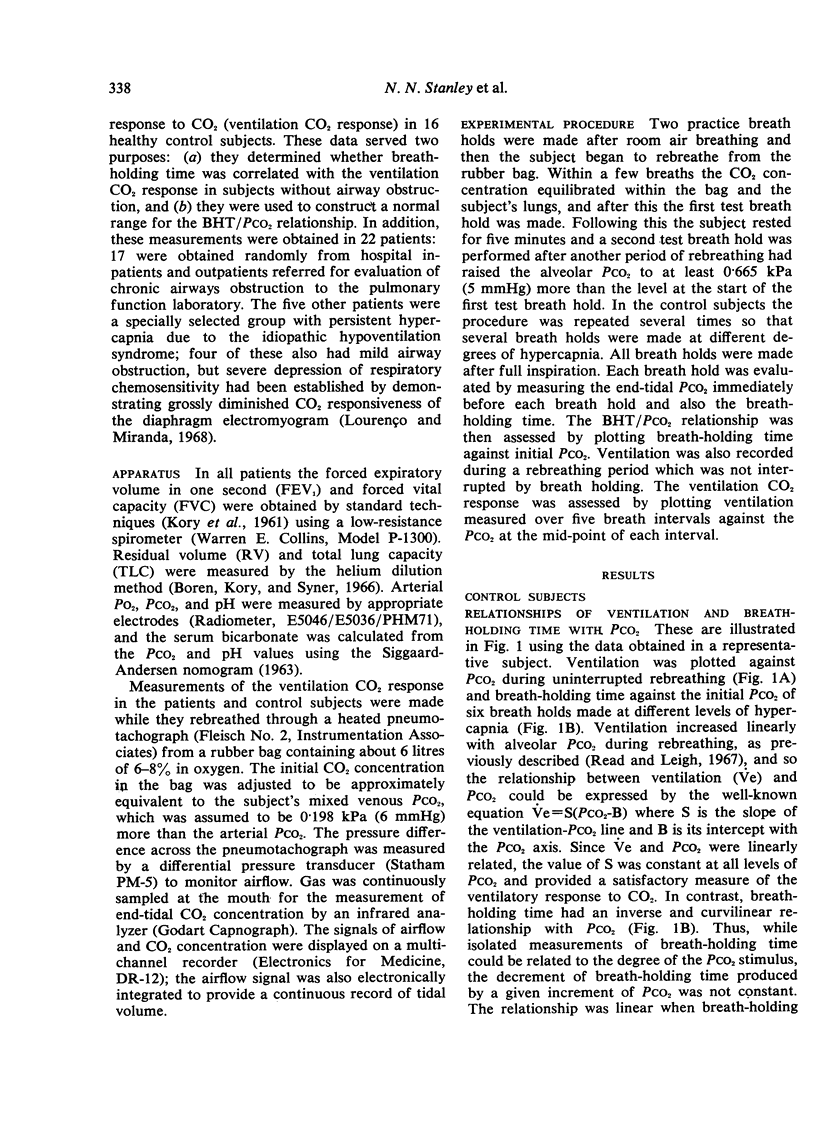
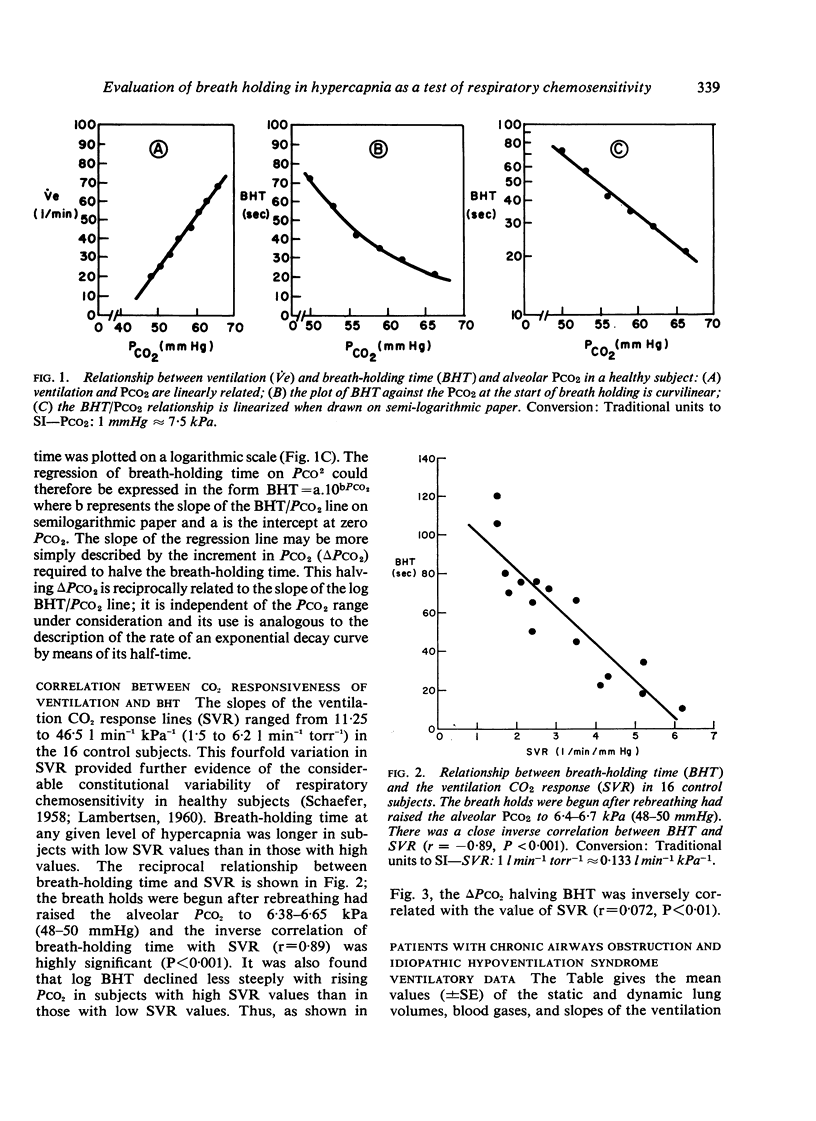
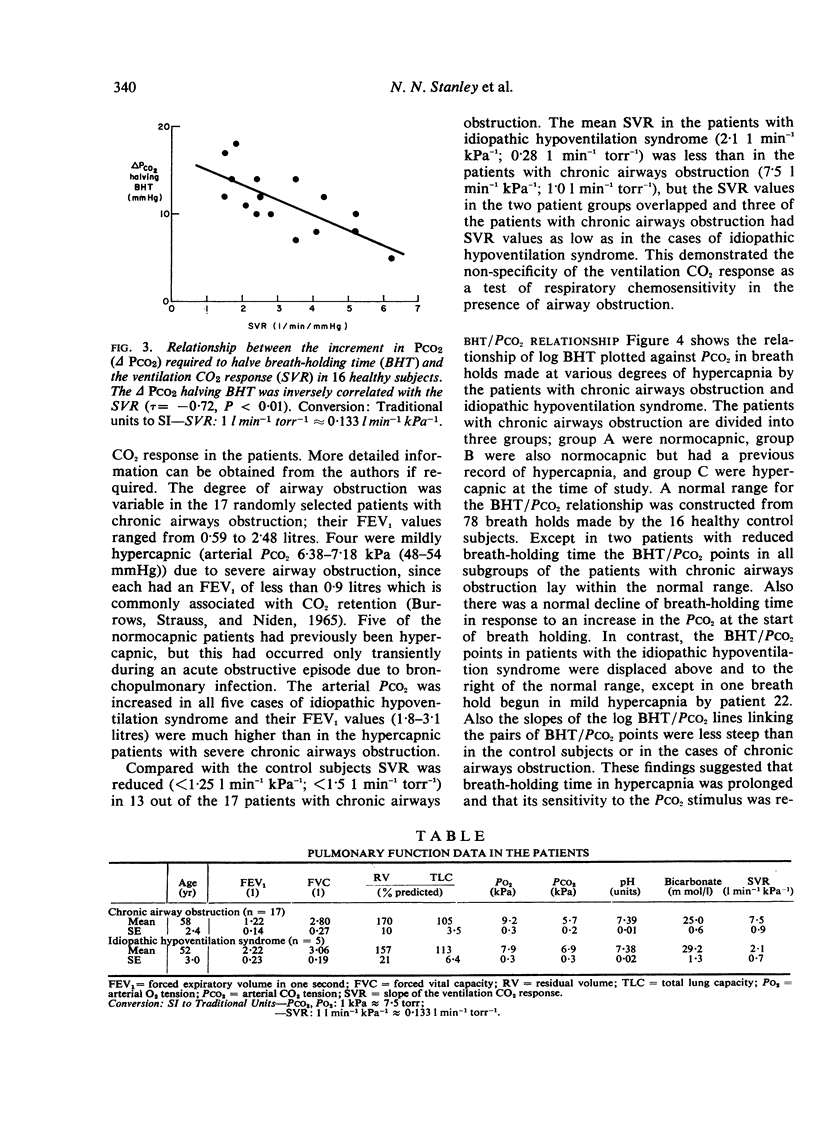
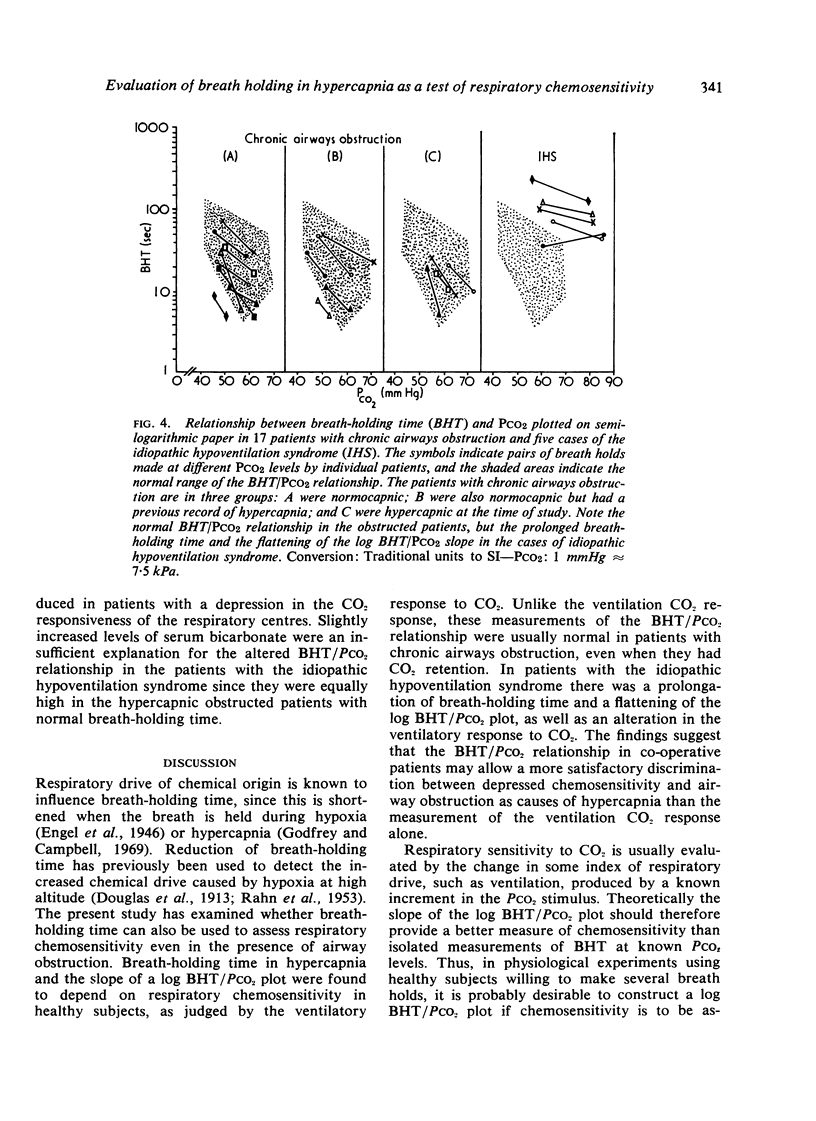
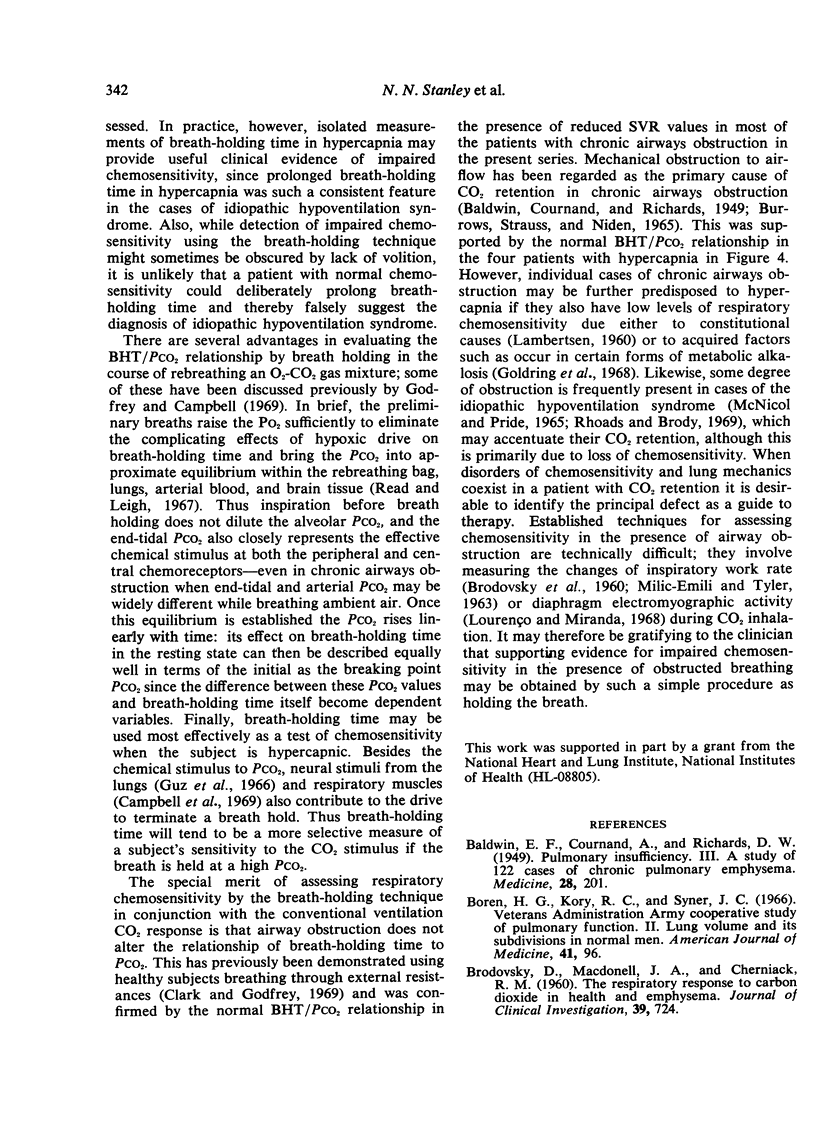
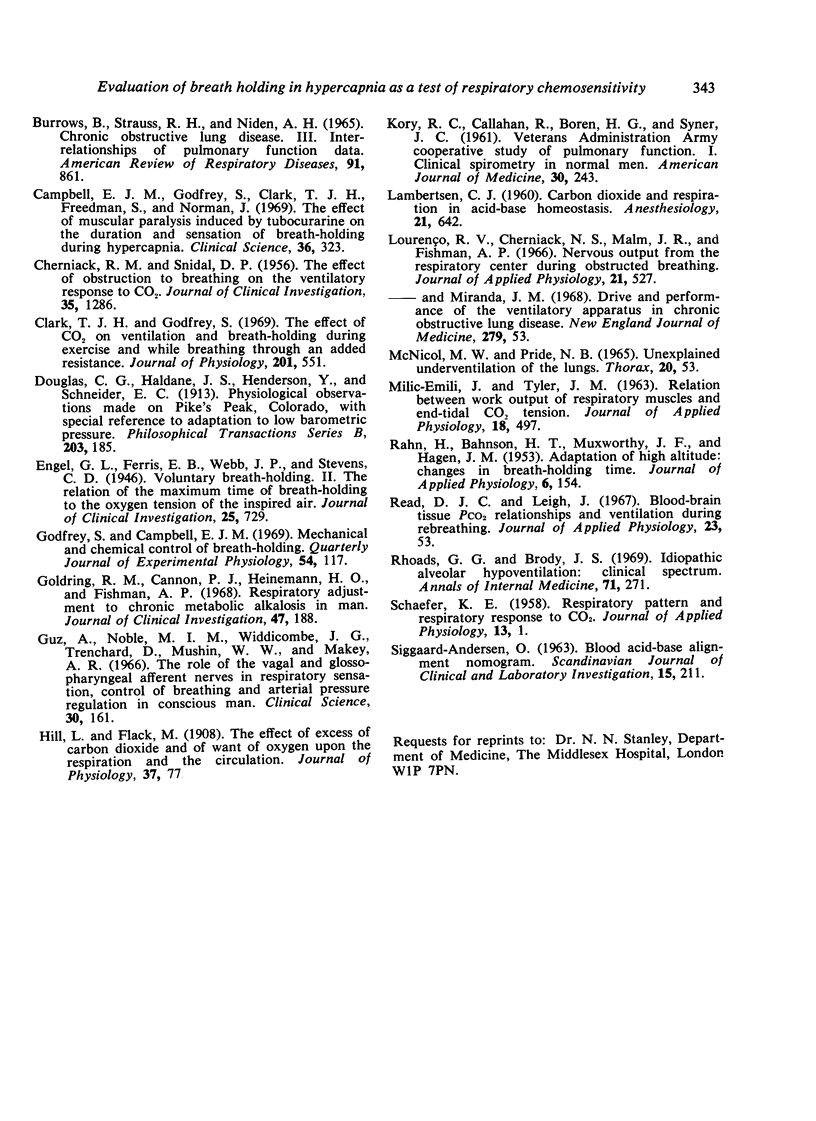
Selected References
These references are in PubMed. This may not be the complete list of references from this article.
- ANDERSEN O. S. Blood acid-base alignment nomogram. Scales for pH, pCO2 base excess of whole blood of different hemoglobin concentrations, plasma bicarbonate, and plasma total-CO2. Scand J Clin Lab Invest. 1963;15:211–217. doi: 10.3109/00365516309079734. [DOI] [PubMed] [Google Scholar]
- BRODOVSKY D., MACDONELL J. A., CHERNIACK R. M. The respiratory response to carbon dioxide in health and in emphysema. J Clin Invest. 1960 May;39:724–729. doi: 10.1172/JCI104089. [DOI] [PMC free article] [PubMed] [Google Scholar]
- BURROWS B., STRAUSS R. H., NIDEN A. H. CHRONIC OBSTRUCTIVE LUNG DISEASE. 3. INTERRELATIONSHIPS OF PULMONARY FUNCTION DATA. Am Rev Respir Dis. 1965 Jun;91:861–868. doi: 10.1164/arrd.1965.91.6.861. [DOI] [PubMed] [Google Scholar]
- CHERNIACK R. M., SNIDAL D. P. The effect of obstruction to breathing on the ventilatory response to CO2. J Clin Invest. 1956 Nov;35(11):1286–1290. doi: 10.1172/JCI103383. [DOI] [PMC free article] [PubMed] [Google Scholar]
- Campbell E. J., Godfrey S., Clark T. J., Freedman S., Norman J. The effect of muscular paralysis induced by tubocurarine on the duration and sensation of breath-holding during hypercapnia. Clin Sci. 1969 Apr;36(2):323–328. [PubMed] [Google Scholar]
- Clark T. J., Godfrey S. The effect of CO2 on ventilation and breath-holding during exercise and while breathing through an added resistance. J Physiol. 1969 May;201(3):551–566. doi: 10.1113/jphysiol.1969.sp008772. [DOI] [PMC free article] [PubMed] [Google Scholar]
- Engel G. L., Ferris E. B., Webb J. P., Stevens C. D. VOLUNTARY BREATHHOLDING. II. THE RELATION OF THE MAXIMUM TIME OF BREATHHOLDING TO THE OXYGEN TENSION OF THE INSPIRED AIR. J Clin Invest. 1946 Sep;25(5):729–733. doi: 10.1172/JCI101756. [DOI] [PMC free article] [PubMed] [Google Scholar]
- Godfrey S., Campbell E. J. Mechanical and chemical control of breath holding. Q J Exp Physiol Cogn Med Sci. 1969 Apr;54(2):117–128. doi: 10.1113/expphysiol.1969.sp002011. [DOI] [PubMed] [Google Scholar]
- Goldring R. M., Cannon P. J., Heinemann H. O., Fishman A. P. Respiratory adjustment to chronic metabolic alkalosis in man. J Clin Invest. 1968 Jan;47(1):188–202. doi: 10.1172/JCI105708. [DOI] [PMC free article] [PubMed] [Google Scholar]
- Guz A., Noble M. I., Widdicombe J. G., Trenchard D., Mushin W. W., Makey A. R. The role of vagal and glossopharyngeal afferent nerves in respiratory sensation, control of breathing and arterial pressure regulation in conscious man. Clin Sci. 1966 Feb;30(1):161–170. [PubMed] [Google Scholar]
- KORY R. C., CALLAHAN R., BOREN H. G., SYNER J. C. The Veterans Administration-Army cooperative study of pulmonary function. I. Clinical spirometry in normal men. Am J Med. 1961 Feb;30:243–258. doi: 10.1016/0002-9343(61)90096-1. [DOI] [PubMed] [Google Scholar]
- LAMBERTSEN C. J. Carbon dioxide and respiration in acid-base homeostasis. Anesthesiology. 1960 Nov-Dec;21:642–651. doi: 10.1097/00000542-196011000-00008. [DOI] [PubMed] [Google Scholar]
- Lourenço R. V., Cherniack N. S., Malm J. R., Fishman A. P. Nervous output from the respiratory center during obstructed breathing. J Appl Physiol. 1966 Mar;21(2):527–533. doi: 10.1152/jappl.1966.21.2.527. [DOI] [PubMed] [Google Scholar]
- MCNICOL M. W., PRIDE N. B. UNEXPLAINED UNDERVENTILATION OF THE LUNGS. Thorax. 1965 Jan;20:53–65. doi: 10.1136/thx.20.1.53. [DOI] [PMC free article] [PubMed] [Google Scholar]
- RAHN H., BAHNSON H. T., MUXWORTHY J. F., HAGEN J. M. Adaptation to high altitude: changes in breath-holding time. J Appl Physiol. 1953 Sep;6(3):154–157. doi: 10.1152/jappl.1953.6.3.154. [DOI] [PubMed] [Google Scholar]
- Read D. J., Leigh J. Blood-brain tissue Pco2 relationships and ventilation during rebreathing. J Appl Physiol. 1967 Jul;23(1):53–70. doi: 10.1152/jappl.1967.23.1.53. [DOI] [PubMed] [Google Scholar]
- Rhoads G. G., Brody J. S. Idiopathic alveolar hypoventilation: clinical spectrum. Ann Intern Med. 1969 Aug;71(2):271–278. doi: 10.7326/0003-4819-71-2-271. [DOI] [PubMed] [Google Scholar]
- SCHAEFER K. E. Respiratory pattern and respiratory response to CO2. J Appl Physiol. 1958 Jul;13(1):1–14. doi: 10.1152/jappl.1958.13.1.1. [DOI] [PubMed] [Google Scholar]


